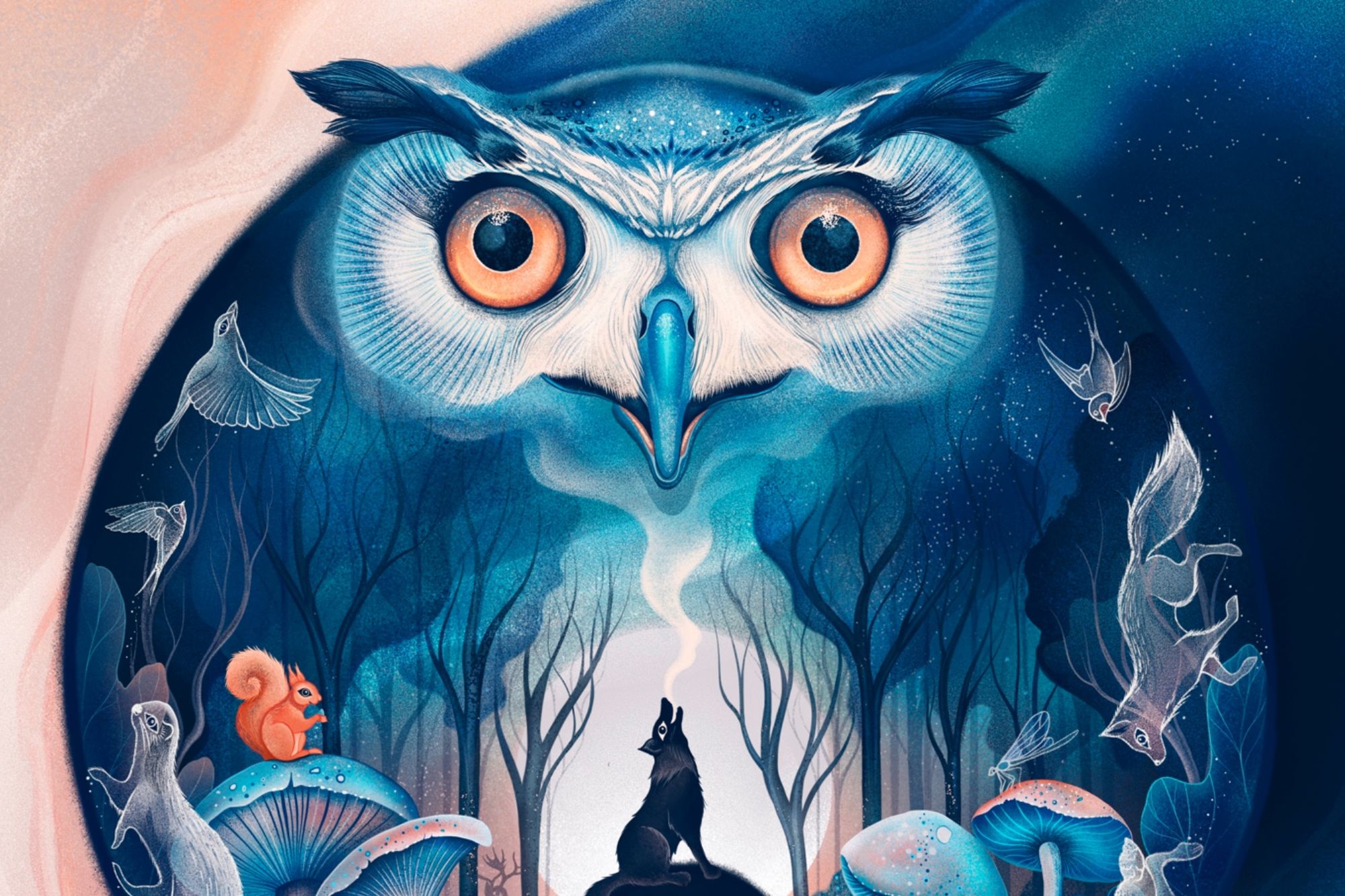In Search of the Fairytale Lands

I often imagined Great Britain as a forested fairytale land, the place where Tolkien’s elves roamed and witches dwelled deep in the Oak wood among dancing fairies and King Arthur’s knights. Cycling across the UK revealed a different narrative.
Farm field upon farm field often made us feel we were in the same landscape, from southern England to northern Scotland. While trees dot the horizons, we couldn’t help but ask on repeat:
Where are all the trees?

I created this illustration while reflecting on the essence of forest ecosystems, and the animated version is born from a desire for whimsy and play in forests. It’s a prayer for the wild ones, for the spirits who hide and watch us from dwindling wild spaces.
This is my first ever animation, the result of taking a Skillshare course this summer on animating illustrations in Procreate; it’s loads of fun! I also added layers of music and forest sounds.
Long ago warriors looked to the skies for Athena’s owl, searching for a sign of favor from the Goddess of war and wisdom as they shed blood on battlefields. Wise Owl, who sees in the dark and reminds us to see within our own shadow and listen more closely.
How can one whimsical feather combine with so many others to equal the rising vitality of Owl? I delight whenever seeing a stray feather on the ground, reminded of the power of One.
I always imagined Scotland as a wonderland, the place where fairies dance in rings of mushrooms and spirits of all sorts appear in the mists.
Maybe this imagination stems from a deep intuitive memory & vision for a different kind of existence on Earth. One where forests replace mono crop farmlands and edible plants grow amongst trees in the practice of agroforestry.
I was struck by how barren and tree-less Scotland’s landscape feels, often dominated by sheep. The magic is there, but also an urgent longing that seems to blow across the heather-kissed lands.

Over thousands of years we cut down the trees of the UK and this narrative is continuing around the world.
Today 13% of the UK is forested and much of that is non-native woodland used for timber.
We witnessed many of these forest patches, where trees are so tightly packed they create a dark foreboding atmosphere.
“They’re alive, but somehow soulless,” I whispered one day, not wanting to disturb the eerie silence.
Other woods look like army regiments with trees standing in perfectly straight formation. Life does not seem to flourish in these commercial forests. True wild woods exist, but few remain.


Curiosity has led us back in time to discover the story of Britain’s trees. Was there forest here, and what happened to it? Is this story shared all around the world?
We often look far abroad to the deforestation of the Amazon, but what’s happening there is what happened here, and in many other countries.
Forests are vital to life on Earth. They’ve also been felled by humans for millennia. Yet in just the last 100 years we’ve cut down the same number of trees that were lost in the last 9,000 years under human development.
We’re at a pivotal moment.
Most of us love the peace of a forest, and most of us also use wood products.
The consumption or use of animal derived foods and products is a major contributor to forest loss, as animals take up a lot of land. Either for grazing or the crops to feed them.




How do we move forward from here?
The story is just beginning. We invite you to discover the tale of trees where you live; what have they experienced?
Learning the story of our forests has laid a foundation for the answers we’re eager to continue exploring on our bicycles.
The practices of yesterday can evolve into new ways and that’s the gift many people are bringing to life. Visit Trees for Life UK for a new chapter blossoming in Scotland today.
We are the warriors looking for Athena’s owl, not to shed blood, but to help us listen closely. To hear the owl who is vanishing, but who hasn’t vanished yet.
Written by Karla Sanders @karlasandersart | Photos by Steven Tiller @steventiller
